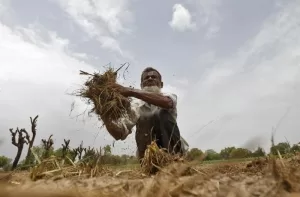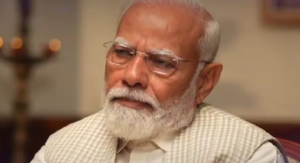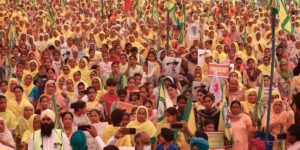January 26 is fast approaching with a great deal of commotion because of the ultimatum issued by the struggling farmers who have laid siege to the capital city of Delhi where the conventional parade takes place every year.
This time around farmers have threatened a “tractor parade” in the city on the occasion of Republic Day if their demands against the new farm laws are not resolved by then.
This is not an empty threat as evidenced from the rehearsals that took place on January 7, 2021 on the Haryana and Uttar Pradesh side of Delhi borders. On the Haryana end the rehearsal had over 2500 tractors and on the UP side it ran into several kilometres.
Rakesh Bains of Bharatiya Kisan Union had this to say: “We are sending the message that we are preparing like this for January 26. The government should accept this. To our own farming community, we send the message that they should all come out on January 26, for the sake of our country, and in order to raise the issues important to us.”
Added All India Kisan Sabha joint secretary Vijoo Krishnan: “This is a clear warning to the Modi-led BJP government that unless the three Acts and the draft Electricity Bill are withdrawn, the struggle will continue. This is only a rehearsal, nothing in comparison to what will happen on Republic Day. Not only in Delhi, but in every state, in every district of the country, we are preparing for similar tractor parades.”
And women are not to be left behind. At several places across Haryana, they are receiving training to drive tractors. Women have been present in large numbers at the protests being held by farmers at Delhi borders, now into their second month.
By having women ride into the Capitol on January 26, farm unions don’t just hope to attract eyeballs but also send a message that their families stand behind them in the agitation. According to Sikkim Nain, a woman activist from Safa Kheri village, this is just a trailer for the government: “We will take our tractors to the Red Fort to participate in the tractor parade. It will be a historical event… Women power has joined the battlefield now. We are not going to retreat, don’t take us lightly. This is the second battle of Independence. If we don’t fight today, what would be our reply to future generations?”
For Haryana, a predominantly patriarchal society, it is a hard decision to take: “Our daughters have to come in when our sons are fighting at the international borders and our men have gheraoed the national capital,” said an elderly farmer, Satbir Pehlwal. So, unless the farmer’s issues are amicably resolved by Republic Day, Farmer’s Parade appears to be inevitable. Come to think of it, this is perhaps the best thing to happen to the Indian Republic. And this parade should take place even if the issues are resolved. Let us see why!
For decades Republic Day parade has been the baby of the Ministry of Defence (MoD) and is predominantly militaristic with some tableaux from states and central ministries/departments thrown in. The parade is commanded by the General Officer Commanding, Headquarters Delhi Area, a Lieutenant General. Chief of Staff, Headquarters Delhi Area, a Major General is the parade second-in-command.
The marching contingent of the Army include tanks of armoured corps, guns of artillery, horse-mounted columns of the Cavalry and soldiers of infantry followed by the tableau of ex-Servicemen. Contingent of the Navy consists of 144 young sailors and the Indian Air Force contingent also has 144 men preceded by some modern hardware of these forces. There are also some para-military and NCC contingents.
The blatantly military aspect in the 2019 parade was the display of American M777 Howitzers, K-9 Vajra. These were the first major induction of artillery guns in the Indian Army since Bofors guns of the mid-1980s. Transport Satellite Terminal (TST), Surface Mine Clearing System (SMCS) and Troop Level Radar were also exhibited as part of the Army’s mechanised columns on the ceremonial boulevard.
The Indian Army’s T-90 tank (Bhishma), Ballway Machine Pikate (II/IIK), Brahmos Missile System, weapon locating radar (Swathi), bridge laying tank T-72, mobile base transceiver station and Akash weapon system were the main draw in the mechanised columns. There will be a virtual repeat this year also, maybe with the addition of Rafale aircraft!
As of now, Republic Day parade is mainly meant to demonstrate the ‘military might’ of the Indian state. The question is for whom is the ‘demonstration’ meant ? For our so-called ‘enemies’ to beware, or else…? Or for our own citizens to obey the state unquestioningly, or else…?
If it is the former, it has become meaningless since our ‘enemies’ know what military-wares we have most of which are imported. If it is the latter it is against the very ethos of our Democratic Republic in which the citizen is sovereign and as Rousseau famously said, “Obedience is not the duty of a citizen.”
If on the other hand the idea is to give a sense of security to the people, it will be an exercise in futility.
Often there have been questions as to whether celebration of Republic Day should be through military parades or civilian pageants. Let us look at the definition of these two. While pageant is an elaborate colourful exhibition or spectacle often with music that consists of a series of tableaux, parade is the ceremonial formation of a body of troops before a superior officer.
Republic is defined as a government in which supreme power resides with the citizens and is exercised by representatives elected by them. There is nothing military about it. It follows that Republic Day celebrations should be citizen-centric with lots of songs, dance and tableaux which would form the pageant.
Instead, what is dominating India’s Republic Day is military/paramilitary parade, relegating the pageant to the background. President of India as Supreme Commander of the Armed Forces, takes the salute. It is the military that manages the mega-show. Therefore, the main focus of the celebration is parade, not pageant. Typical media headlines on India’s 70th Republic Day celebration ran like this: “India Showcases Its Military Might at Republic Day Parade.”
Be that as it may, the very idea of India as a ‘bounded nation’ implies that its ‘borders’ need to be ‘protected’ by its Armed Forces. And this seems to be the chief reason for the elevated status of military power as a symbol of the nation, particularly in these troubled times when, despite the rhetoric of globalisation, nation-states continue to prevail and in an environment of social darwinism, war or the fear of war is normalised.
The ritualisation of the Republic Day parade reinforces this sort of nationalist euphoria: see the march of the army–disciplined/tight/masculine bodies of trained/robotic soldiers saluting the flag; feel good, cherish the narcissism of the nation and think that you are more powerful than your ‘enemies’.
Despite the sound of the boots of the marching army, an imaginary unity in the name of fighting the ‘external enemy’ (which has become a wild obsession these days) cannot create a healthy nation. A fractured/fragmented nation can be healed only by eradicating the arbitrariness and injustice within and reinforcing democratic values.
As the parade–almost like the totemic ritual–seeks to reinforce ‘solidarity’, this form of obsessive nationalism conditions our minds and limits our horizon. This narrowness and its implicit violence, brings about militant nationalism, which is wrecking the nation today with its rigidity and mechanisation and its reckless regimentation.
Even as we approach the day of festive celebration, what we see is a violent nation with heightened social tension and economic inequality, and all sorts of aggression are taking place in the name of exclusionary identities. Sanity demands that we come out of the rhetoric of nationalism and valorisation of militarised heroism, and move towards compassion, civility and kindness which are the hallmarks of Sanatan Dharam that symbolises true Hinduism.
For this to happen, Republic Day should be less militarised and made more public in the sense that it should become a people’s pageant and a celebration of citizens. Long ago, the Greek philosopher-statesman Aristotle spoke these prophetic words: “Republics decline into democracies and democracies degenerate into despotism.” This is what is exactly happening in India, touted as the “largest democracy in the world,” and the ongoing intense Kisan struggle exemplifies this more than anything else.
Decades ago, the diminutive Prime Minister Lal Bahadur Shastri gave the clarion “Jai Jawan, Jai Kisan” to bring these ‘warriors of India’ together to fight for the nation and preserve its freedom, unity, equity, integrity and diversity. The present ruling dispensation is doing just the opposite by pitching the Jawan against the Kisan.
This cannot be countenanced. A Jawan-Kisan Republic Day-2021 is possibly the best panacea! Let the farmers parade and celebrate!
(M.G. Devasahayam is a former Army and IAS Officer. Article courtesy: The Citizen.)




